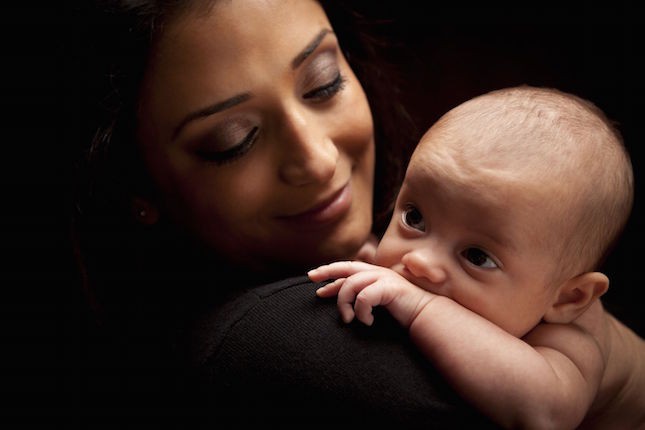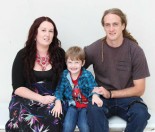Around the world, caring for mothers after childbirth has traditionally been a matter of great importance. In many societies the practical knowledge of how to help mothers after childbirth is still handed down through the generations by the women elders of the family. It is a time of celebration when family and community work together to honour and care for the mother so that she can enter a period of ease, recover her strength and bond with her baby.
The postnatal period refers to the six weeks after birth. This is when women are more in need of rest and care than at any other time in their reproductive lives. Their bodies are healing after giving birth (which has been compared to running a marathon!), while at the same time they are producing milk and being woken in the night to feed baby. (Lactation alone increases the mother’s energy needs by 25-30%). On top of this, the hormones are changing rapidly after the pregnancy and birth, and huge psychological changes are taking place as she makes the transition to motherhood and begins a lifelong relationship of loving with a new being. She is drawing on all her resources throughout this period.
Her situation means that she is physically and emotionally vulnerable: if she does not get the rest and support she needs she can easily become exhausted and burned out.
In our fast-paced, modern Western societies the tradition of postnatal care is now almost lost. While the baby receives the best of care, the mother’s needs are given much less emphasis. Migrant women who give birth in Western countries (bringing their own expectations of how they will be cared for) often notice that they are not given the same attention and position of honour that their own traditions dictate they should have. At the same time, for all women there is the pressure from fashion and the media telling us how we must return to pre-pregnant body shapes as soon as possible after the birth. The result is that mothers are often undermined. They are stressed at a time when they should be at their most relaxed, which negatively affects their immune system, mood, healing, breastfeeding and bonding with baby. In turn this impacts on the baby’s stress levels.
Traditional ways of caring for mothers around the world help to support a different result. They recognise a new mother’s special state and respond to her needs with practices that will support her on all levels. There is a lot we can learn from them.
In most traditions the period after childbirth is marked with a special name. It is called ‘the 40 days’ in many parts of Africa, the Middle East and South Asia. In China, women talking about ‘doing the month’, or ‘golden month (‘month’ generally transitioning into six weeks). In parts of South America, it is called ‘resguardo’ or ‘protection’. It is usually a recognised period of up to six weeks, which covers the time for the major physical healing and hormonal changes to have taken place. However, in some countries, such as Ethiopia and Gabon, the period of care may be extended for months if the birth has been complicated or the recovery difficult. In a few others, some Pacific Islands for example, the period of rest is not fixed. It depends on the pace of each mother’s recovery and she is given support until she feels confident to return to her regular life.
All traditions have some basic practices in common and in listening to mothers from different countries I was surprised to find how similar these are. They are simple but important ways of enriching the postnatal experience to help recovery.
There are four main common practices: rest, massage, a specific type of diet and the support of others.
Rest:
According to traditional practices, when the mother rests after birth she is not just absent from work or relieved of domestic duties, she is encouraged to rest totally. She does nothing except lie around feeding her baby and receiving food, praise and gifts. Does this sound familiar to any of us mothers? It might, except that the difference for us is that it might last a week or two, whereas in these traditions it continues for six weeks. And it is a complete rest. The family all help with the care of mother and baby and mother rests and sleeps as she likes. A Samoan mother told me that even her hair was brushed for her during this time. “I felt like a queen,” she said.
The mother does not exercise for the first few weeks. This is because the joints and ligaments are still loose from the pregnancy and can easily be injured. And she is tired. In China it is believed that the energy (‘Qi’) and blood (‘Xue’) are weakened by giving birth. They must be slowly replenished by rest and correct diet. At this stage, to expend energy in exercise would be to go against what her body needs. Gradually, after a few weeks, she can begin to exercise gently with walking, small activities, or a few yoga stretches. This way her energy is safeguarded.
Massage:
With all the resting the mother does, there must also be a way to stop her body from becoming sluggish. Massage is a form of passive exercise: it encourages the circulation of blood and lymph and directs it to areas where tissues need to heal. It also helps realign the joints of the hips and pelvis and dissolves muscular tension, and it gives the sense of well-being you can get from a good exercise session. In addition, the simple touch of a caring human being is calming and reassuring, and the hands of the therapist can give energy to the mother’s body. Massage is traditionally given every day. One Indian mother felt that it resolved the hollow feeling she had felt in her lower body since giving birth. After a few weeks of daily massage her body felt replenished again. A teenage Malian mother said she could not have coped without her daily massage with shea butter. In Chinese medical tradition, ‘mother roasting’ is given with a lighted stick of herbs to warm the lower abdomen and back, strengthen energy and promote good pelvic circulation. Warming of the pelvic area is common in many traditions.
Diet
The principles of a good postnatal diet are the same worldwide, even though food and cooking styles vary a lot. The diet is based on fresh, easily digested, ‘nutrient-dense’ food, concentrated sources of proteins, vitamins, minerals and complex carbohydrates. It is served warm to enhance the activity of digestive enzymes and aid the digestion.
Most cultures recognize that diet is a powerful way to heal the body. A nutrient-dense diet which is easy to assimilate replenishes the blood and nutrients lost in giving birth. It is the foundation for good lactation. Nutrient-dense food is called ‘strong’ food, and food which ‘strengthens energy and blood.’ A common dish which is found everywhere, from Colombia, to Romania to China, is chicken soup. Chicken soup is full of protein and essential minerals. It nourishes the body, calms the mind and strengthens immunity and digestion. Sometimes chicken casserole is served as a variation. In Morrocco, for example, the new mother is given chicken casseroles after birth with turmeric, saffron and a little ginger and cinnamon to warm her body and cleanse her blood. As in most other traditions, she avoids spicy food and cold drinks for 40 days. She also has an energizing snack throughout the day made of ground sesame and almonds.
A correct diet is given great priority by those who follow traditional practices. In one group who live on the Amazon River, the father is even teased if he can not provide enough chickens for his wife. Even those who are much less well off than others will make the effort to ensure that the mother receives the good food she needs.
Social support
One of the most important features of good postnatal care is the ‘mothering’ that the mother receives herself. In traditional practices, when older women look after the mother and she allows herself to receive their support, a deeper process of mothering is taught. The mother’s role is being modeled for her by her carer(s) and this helps her come into her own role as mother. And it is reinforced each time she gives birth.
Another important part of support is acknowledging the high status of the mother after giving birth. It is not for nothing that so many women say that they feel like queens during their 40 days. In the traditional Maori view, for example, the mother is called ‘te whare tangata’, the ‘house of humanity’. Giving birth reinforces the sacredness of her role and the high status attached to it. In many traditions around the world she is given gifts and frequent praise as well as practical service. In North Africa her status is raised even further if she gives birth to twins: she is greeted as ‘my lady’ and regarded as blessed.
In a traditional situation the father is a central part of the mother’s care, emotionally and practically. He shares in the happiness and importance of the event, and he helps with many things even if the mother’s direct carers are older women. He is also helped, though, by the rest of the family. Caring for the household while the mother rests is not something he is expected to do alone.
With urbanisation and the influence of Western culture there has been a worldwide decline in traditional practices in the last few years. In spite of this however, many cultures/communities still value their traditional practices. They continue to uphold them and find ways to adapt them to modern urban lifestyles. Many migrant families do their best to follow their own traditions in a foreign setting. I have noticed, for example, that Chinese mothers’ parents often come to New Zealand from China for several months to look after mother and baby after birth. These mothers have the opportunity for a relaxed transition to motherhood and can regain health and strength in their own time.
Myths sometimes circulate in the West about how ‘tribal’ women just give birth, tie the baby on their backs and then keep working away on the farm. Myths like these do not serve us: they set an impossible goal for women who believe they must struggle to regain fitness and energy as soon as possible after the birth. They also perpetuate the idea that we must strive to be independent and ‘strong’ at all times. When I talked with these women I found that in a normal situation, the opposite was true. They follow the period of rest and accept the care and attention they are given. They feel entitled to be, and are treated like ‘queens’.
In Vietnam it is said that a woman is the most beautiful she will ever be after the birth of her first baby. Giving birth is seen as a watershed in her physical, emotional and spiritual life, and with proper care she has the opportunity for complete renewal. A mother from Ethiopia tells me how wonderful she felt after being nurtured for six weeks. “I was full of energy and my skin and hair were smooth and shiny from all the massage and good food,” she says. A Malian woman tells me she feels so strong after her ‘40 days’ that she could run and climb the nearest tree!
It has been a revelation to learn from mothers around the world about their postnatal care and to understand the benefits of good care. I hope that our existing traditions receive the support they need to flourish and that we can adapt their ideas to benefit all of our mothers.










